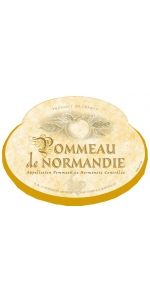Wine from Normandy

Because of the ocean climate, Normandy is not known for wine, but there have been vineyards in the past that have produced inexpensive boxed wine. There is only one small winery in Upper Normandy, which is locally renowned for producing excellent wine that goes well with the famous meals in the area. Arpents du Soleil is the name of the local winery. The climate in the northern part of Normandy is a sunny and dry microclimate. In 2007, this vineyard produced 15,000 bottles of wine. Produced in Normandy, Pommeau de Normandie is a drink made with pears and apples, two of Normandy’s specialites. Pommeau is produced by mixing apple eau-de-vie with slightly fermented apple must. This raises the alcohol level high enough so that the yeast will survive. Without yeasts, the fermentation process will stop. After fermentation, the producers are left with an apple scented juice that is quite sweet. The final alcohol content is between 16 and 18%. The process is known as mutage and is essentially the same technique that is used for making vins doux naturels. Pommeau is a mistelle. This is a French term that means partially fermented fruit fortified with alcohol.
The Fournier Family cider story started in 1943. Located in South Normandy in the middle of Dukes of Alençon province, the landscape is offering a mix between green valley and strong hills. Apples and pear trees are growing up on the hills. It is in this typical and original environment that Fournier Cider is cultivating their orchard. The fruit variety selected is giving character, authenticity and quality. The Cidre Fournier Spirit is having under control quality in their growth over: love of the land, the orchards, qualitative fruits and product well made.
perfect with savory dishes like meat and buckwheat pancake. It can be mixed with fruit liquor for cocktail.
Pommeau de Normandie a mistel type of beverage. Same process as Floc de Gascogne, Pineau des Charentes and Ratafia de Champagne.
It is made with 2/3 Unfermented sweet fruit juice (apple and pear) with 1/3 distilled alcohol at 51% ABV (Calvados).
Excellent with desert, such as French crepes (very thin pancakes).
- back
Selected Options
Regions
Categories
Pricing
Countries
Regions
Grape Types
Wineries
Organic/Free Shipping
All older vintage wines have been purchased from a single collectors cellar. Pictures can be requested before shipment.
Gaja Sperss is made from 100 percent Nebbiolo.
Vibrant and intense notes of herbs and spices such as thyme, cloves and black pepper. On the palate the wine is tense, loaded with energy that will need serious ageing to fully develop although extremely approachable in its youth. Impressive fruit concentration, with dark and ripe fruits – prunes and black cherries. Acidity and tannins lift this wine to its freshest expression.
Nebbiolo based wines have not only complexity and structure but also great elegance and finesse. The distinctive silky tannins of the Nebbiolo make it the right wine to drink with meat. Usually a young vintage goes very well with richer dishes because of the stronger tannins; mature Barolos are more suitable with delicate white meat courses or braised meat courses with sauces or concentrated red wines reductions.
Review:
The 2019 Barolo Sperss is rich with dark mineral earth, black cherry, and Earl Grey tea. Long and mouthwatering, it has a powerful structure while retaining finesse. It is fantastically balanced, with gripping tannins, fresh acidity, and notes of forested earth and ripe red berries. A wine for the long haul, this is another great and noble wine to drink over the coming three decades.
-Jeb Dunnuck 99 Points






